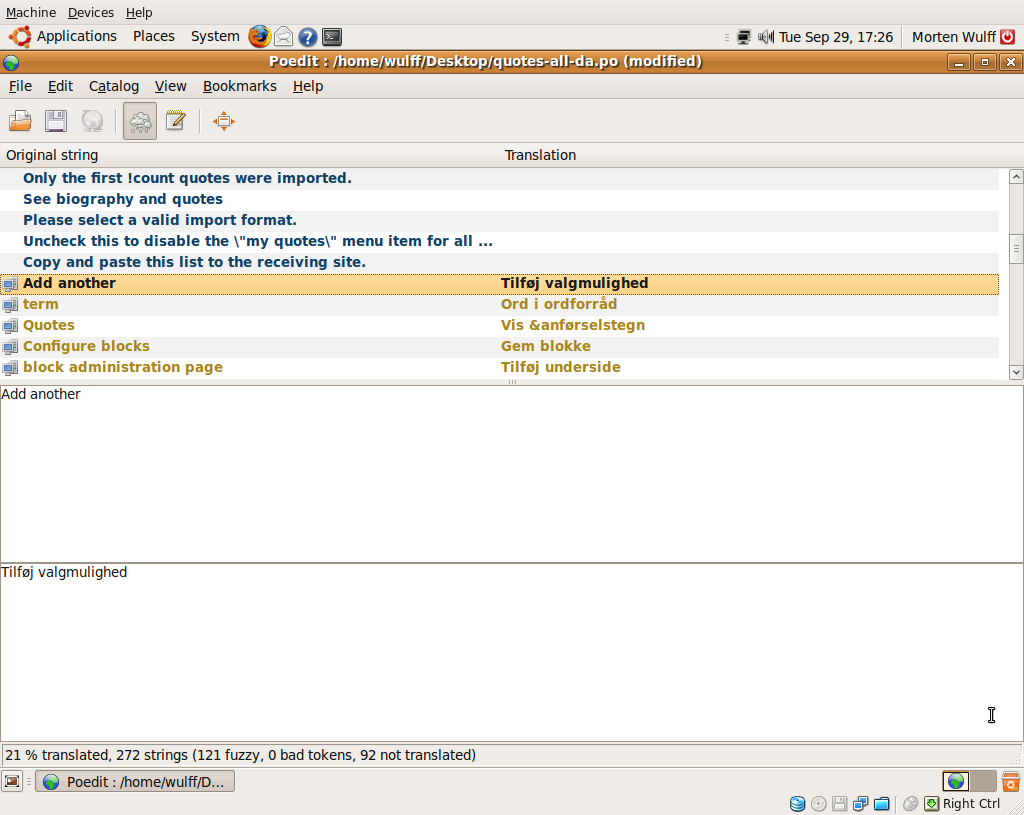

Some strings that can be ambiguous or having several meanings according to different contexts may have a context prefix: ‘Context|Ambiguous string’.Then the msgstr of that message will be automatically reused for the new message, but the new message will also at the same time be marked fuzzy so that the translator knows there is some difference that he or she needs to adapt the translation to match. A new string has been added to the source, and the string is similar (but not identical) to the msgid of an already existing, translated message.The translator needs to check that the msgstr is still valid and make changes if necessary. A typo in the string may have been fixed or the string altered in some other way. The original string that the msgid represents was changed in the source code.A message can become fuzzy in one of two ways:
POEDIT ORG MANUAL
The fuzzy state is special and essentially means that there is a translation in the msgstr part, but that this translation is most likely not entirely correct, and that it thus needs manual attention by a translator. In a similar manner, an untranslated message is one where the msgstr is empty. A message counts as translated as soon as the msgstr part of it is non-empty. The message can be translated, fuzzy, or untranslated.

They are only there as a help for translators and developers to know where a message came from.Ī message in a PO file can be in one of essentially three different states. In addition to the msgid and msgstr parts, a message usually also has lines starting with #: that tell what source files and what lines the string used as msgid was extracted from. #: gedit/dialogs/gedit-plugin-program-location-dialog.c:78 The format is basically a hash list consisting of msgid and msgstr pairs, with the msgid being the original English string and key, and the msgstr being the translated value of it. The PO format is a really simple format, which probably at least partly explains its success and widespread use. If you open a PO file with a text editor for the first time, you will find its syntax very simple.
POEDIT ORG UPDATE
You can use it like this to update lt.po from inkscape.pot: GNU gettext also provides the command msgmerge. with Poedit you can use the menu option ‘Catalog > Update from POT file…’.
POEDIT ORG SOFTWARE
Some software offers the ability to automatically sync the translation file with the template, e.g. If a translation file is already present for your language but the programmers have updated the template (.pot) since the translation was done, you need to sync the PO file with the template, especially for the new strings being added, but also for other info: position of the original string in the project, removing or marking obsolete strings, recognizing small string modifications… You can see a complete reference too from installed info pages by running the command: Virtaal - cross-platform PO editor that is clean, simple to use yet powerful Īnd last but not least, gettext utils, which are installed on every Linux distribution.gedit - text editor for GNOME desktops, has a syntax highlight mode for PO file syntax.Emacs's po-mode (contained in the gettext distribution the version in po-utils is old).However, many useful tools have been developed to provide a simple experience translating PO files. You can edit PO files from any plain text editor, since they are simple text files. Create a copy and put it to the right place (just see how other languages are managed).

It contains the strings to translate without any translation. This template is a file whose name ends with. If the PO file for your language does not exist yet, then you must create it as a copy of the translation template. PO translation files Add a new translation file Subscribe to the translator mailing list.Translations statistics for master branch (development focus).


 0 kommentar(er)
0 kommentar(er)
